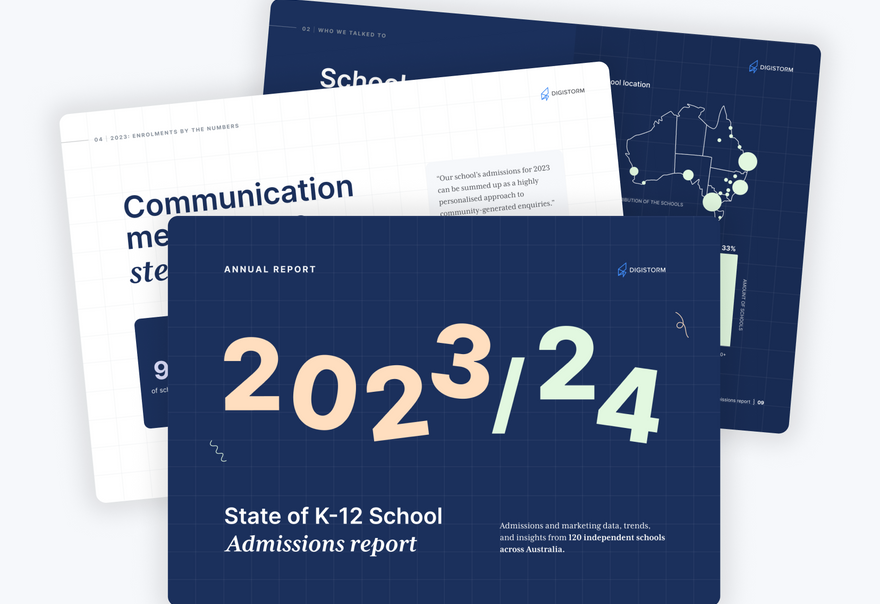For most of us, a consultation with Google is required for all of our big decisions and large purchases.
"Is the new Apple Watch better than the last model?" "Are poodles hypoallergenic?" "What's the best fridge under $1,000?"
When it comes to choosing a school for kids, parents are no different. While your in-school experience (like your facility tours) might be amazing, it’s usually not the first touchpoint you’ll have with potential students and their parents. Most of the time, they'll have a wealth of information and opinions about your school before they even step foot on school grounds—all sourced from an in-depth investigative session with Google.
So how do you make sure that your online reputation encourages local parents to take the next steps with your school? Here are a few ideas...
Be proactive
There’s a difference between taking a proactive and a reactive approach when it comes to managing your school’s reputation.
Schools that take a reactive approach respond to matters (whether it be an event, a post, or an article) as they happen.
Schools that take a proactive approach plan ahead. They are strategic about the message they convey, and to whom it is directed.
Being reactive allows your audience to draw their own conclusions about you. While everyone is (of course) free to form their own opinions, your audience should never be left to “fill in the gaps” about what your school stands for and the culture of your school.
On the other hand, you can be proactive by:
- sharing alumni stories (where they are now, and how your school has helped pave the path)
- actively participating in the forums that your potential students’ parents are active in
- driving traffic to your school’s website by posting relevant, valuable content
- sharing images or videos that tell your school’s unique story through social media.
Understand the concept of 'social proof'
Social proof is a psychological phenomenon where people copy the actions of others in the hopes that it will result in them performing the correct behaviour for a given situation. From a marketing perspective, this means that people are more likely to engage in your product or service if other people give it the thumbs up — through positive online reviews, ratings, recommendations and so on.
So get in touch with current students, as well as alumni and their parents and see if you can muster up a few quotes or student stories that you can show off online. People respond to positivity, especially when it’s not self-proclaimed!
Be prepared for negativity
While the idea of building a sterling reputation sounds good, sometimes unforeseeable events can happen, and you need to be prepared for when things go pear-shaped.
Before you get started building your online strategy, you should have a policy in place about your expectations for behaviour and interactions, and a plan for what happens when people overstep. 'Overstepping' could be anything from abusive language, threatening behaviour, instigating negativity, or disclosing information publicly that should not be shared.
To prevent it effectively, you must first make your expectations known. Clearly state your online communications policy for all users, and educate your moderators on what’s okay, what isn’t, and how to handle situations swiftly and effectively. And on that note...
Be a good human
Sounds simple, doesn’t it? But when a disgruntled former student decides to post negative or nasty comments on your online platform, people are going to be looking to see how you handle it. The lesson? Answer every question or comment with grace, even when it’s hard.
Rising above and remaining professional, courteous and kind says a lot more about you than any negative comment can, and builds the trust and honest connection that parents want to see from the institution in line to educate their children. You have full control over your image online, but only if you stand up and take control of it. Want people to know about how well your school has adapted to online learning? Share some photos on social media. Proud of a previous student getting a prestigious university scholarship? Tag them and sing their praises.
Take what you know about the kind of school that you are, and show it to the people that need to see it the most: the parents.




